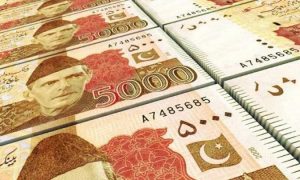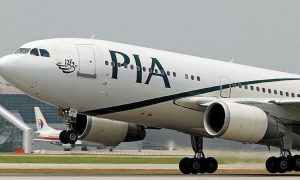Pakistan seemed to be heading toward a disastrous economic disaster in 2023. The IMF had to halt loan payments under a loan agreement Pakistan had signed in 2019 because the organization had doubts about Islamabad’s devotion to reform. The country’s foreign exchange reserves significantly decreased as a result of the IMF program’s failure; at one point this year, due to pressure from debt service, reserves could only cover around two weeks’ worth of imports. The government enforced harsh import restrictions in an effort to rein in dollar outflows in order to prevent defaulting. This led to a significant economic downturn in import-dependent companies, a shortage of necessities, and an increase in inflation.
However, by the end of June, the Pakistani government had managed to make some progress. As an immediate stop-gap measure, the IMF unveiled a new nine-month program with a $3 billion Stand By Arrangement (SBA). Additionally, China and Middle Eastern allies provided economic assistance. Despite the fact that the possibility of default has subsequently diminished, Pakistan still faces substantial economic issues, including upcoming negotiations with the IMF and the need to secure more foreign support, particularly from Saudi Arabia and the UAE.
Pakistan and Financial Struggle
Pakistan has been having trouble with an IMF program since 2019, regularly breaking its reform pledges and experiencing delays in payment. When Pakistan and the IMF were unable to come to terms on reviving the program in February of this year, relations between Pakistan and lender became even worse. As a result, the IMF blocked a loan of $1 billion and other international financial institutions like the World Bank suspended program loans. The two points of disagreement were Pakistan’s need for money to cover its import bill and debt payments as well as the import limitations and artificial exchange rate management.
Significant delays were caused by poor bureaucratic administration, and Pakistan’s finance minister at the time, Ishaq Dar, also resisted calls to ease import and exchange rate limitations. Dar added fuel to the fire by blaming the difficulties on “geopolitics,” a reference to the US obstructing the initiative because of Pakistan’s allegiance to China. This justification, which was meant to deflect domestic political criticism, only served to increase skepticism between Dar and the IMF.
When talks stalled in June and a default threatened, Pakistani Prime Minister Shehbaz Sharif contacted the IMF directly. According to reports, Sharif was oblivious of Pakistan’s hazardous situation and only became aware of its seriousness, after an emergency meeting with the managing director of the IMF in Paris. Sharif consequently accepted to all of the IMF’s demands, resulting in the current SBA agreement.
Read More: Saudi Arabia To Invest $25 bln In Pakistan: PM Kakar
China was helpful in avoiding Pakistan from defaulting. Pakistan will have to refund $5 billion in lent foreign exchange reserves, including $3 billion to China, as well as $3.5 billion in maturing commercial loans to Beijing between January and June 2023. By rolling over and refinancing roughly $7 billion, China helped Pakistan reduce its hefty debt obligations.
Pakistan received assistance from Saudi Arabia and the UAE at this critical time as well. Shehbaz Sharif and Army Chief General Asim Munir met with the rulers of the UAE and Saudi Arabia, Crown Prince Mohammad bin Salman to request financial support. Following this, Saudi Arabia and the UAE each offered $1 billion and $2 billion, contingent on the revival of IMF program.
Economic Recovery Challenges
Pakistan now has a route to economic recovery thanks to the IMF program and financial assistance from Saudi Arabia, the United Arab Emirates, and China. However, Pakistan’s economy still faces a number of issues that, if not handled properly, might lead to even greater economic unrest. Pakistani policymakers face three significant obstacles: finishing the present short-term IMF program by executing politically contentious and inflation-inducing measures; negotiating a new IMF program next year; and concluding investment deals with Arab Gulf countries.



























